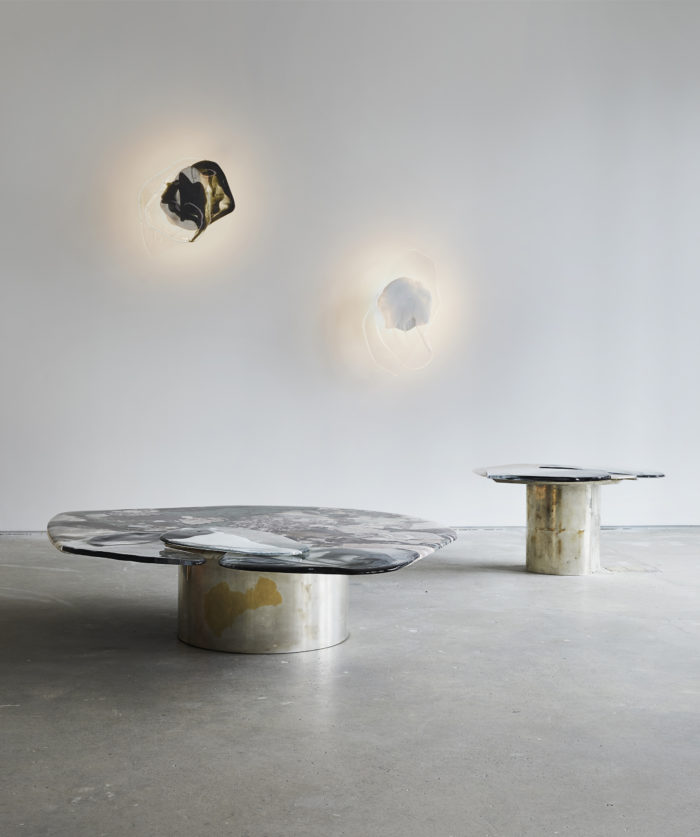
Vincenzo De Cotiis wears many hats. He is commonly referred to as a designer, although he never creates a piece based on its practical use. Interior architect is another title often bestowed on the Italian, whose ability to transform a room with his craftsmanship is uncanny. Though both titles certainly apply, above all, De Cotiis is a contemporary artist. His bold creations exist in the depths of art and architectural history.
In his current exhibition at Carpenters Workshop Gallery, “Baroquisme,” De Cotiis revisits the 16th century. Rather than recreating the style as it existed thousands of years ago, De Cotiis imagines the Italian Baroque in present day. Originally characterized as breaking free from the classicism and mannerism of the 1600s, this period created an idea of freedom and movement, which De Cotiis continues to explore and in his own way deconstruct.
The designer examines baroque’s emphasis on materiality. He revisits the idea of “perfect imperfections.” He captures this idea in “Baroquisme” by juxtaposing different materials that seemingly do not go together. He combines precious materials with things that are practical, inexpensive and rough. For example, French marble and Murano glass pair with fiberglass and other reclaimed materials. His works take on lifeforms of their own; their structures and textures reminiscent of the earth.

There is a sensuality to the way De Cotiis finishes his materials. He purposefully embraces marks of age that are naturally generated in order to harness the imperfect qualities of the organic. Though each of the works in “Baroquisme“ exist as strong physical forms, there is a sense of mystery that pervades the collection. De Cotiis creates movement in the objects, both in their forms and aesthetic. He plays with light and reflection creating an unexpected fluidity.
De Cotiis’s collection is an exploration of his own Italian heritage. He goes beyond conveying just the physical forms of culture instead chasing what Italians themselves are made out of. Speaking of his body of work as a whole, De Cotiis explains that the colors and forms can change but the core philosophy stays the same.










 in your life?
in your life?

